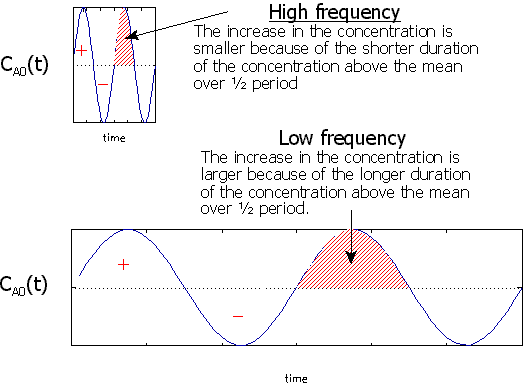
The explanation follows from the drawing below, which shows the two sines with the same amplitudes but different frequencies. The effect of the input change depends on the amount of "difference in" the component A that is introduced during a half period. Naturally, the + and - deviations from the mean cancel, so that the net effect of the average output is zero.
The size of the input integral highlighted in red determines magnitude of the transient deviation in the output. The larger the integral, the larger the output magnitude. Clearly, as the frequency increases, the integral (red shaded area) decreases, so that the output magnitude decreases.
